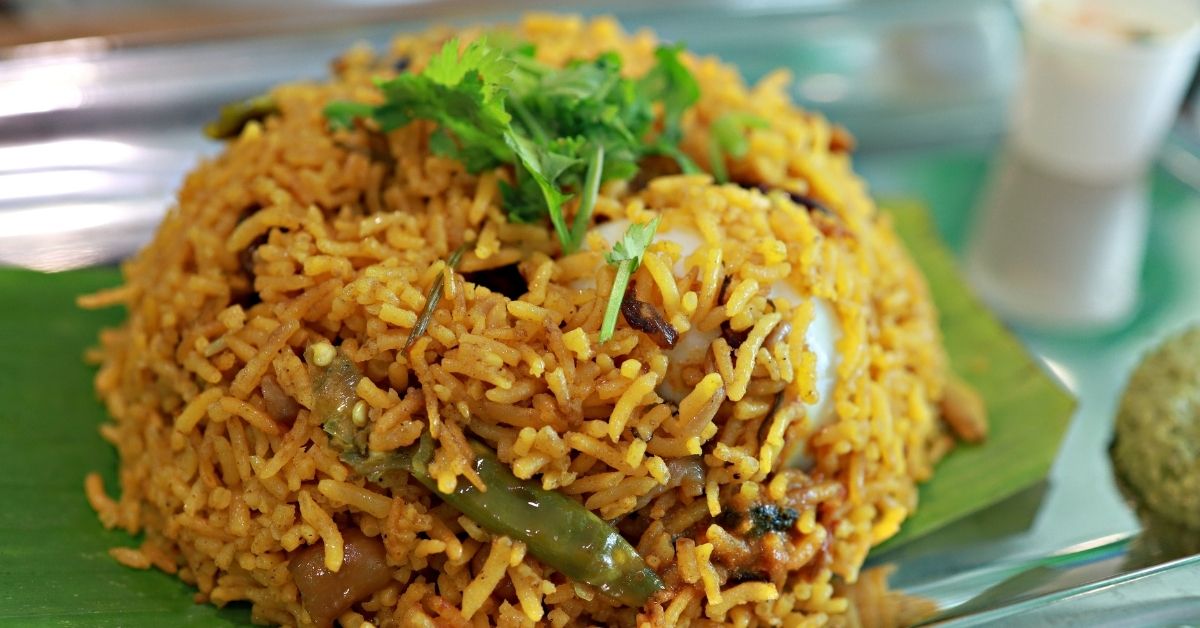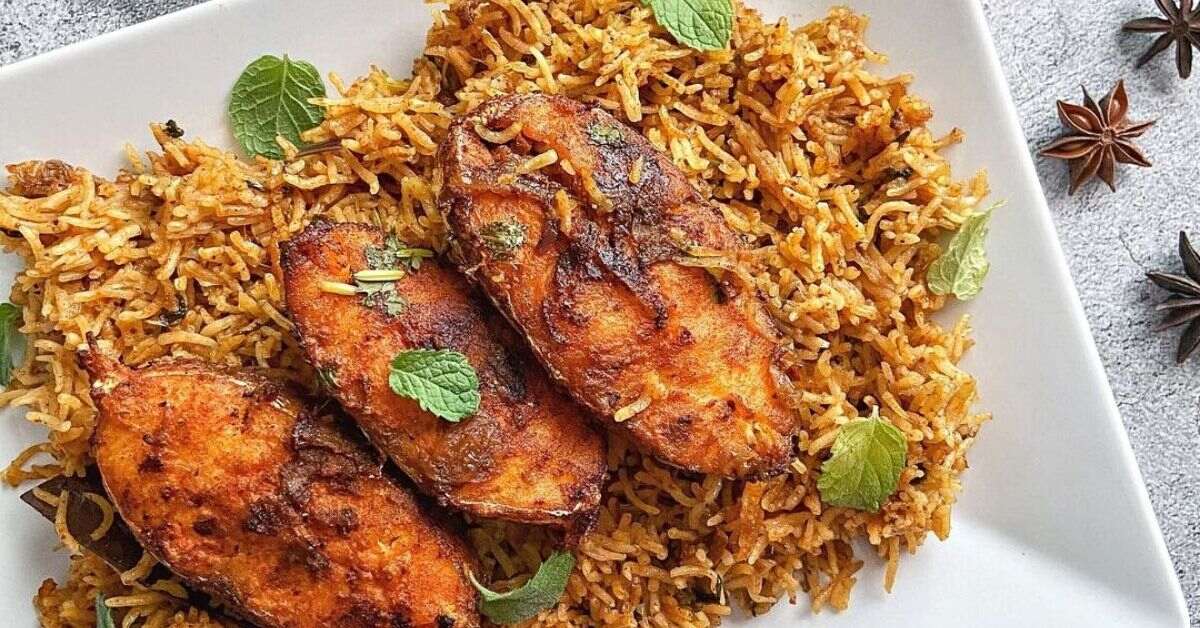Biryani Map of India: Taste the History & Find Your Favourite Among 28 Versions
In India, Biryani is not a food, it's an emotion -- in 2020, it remained the most ordered dish for a third year in a row on Swiggy. So we decided to create a Biryani Map of India that would cover even the rare versions of this iconic dish.

When speaking of a nationally beloved delicacy, Biryani is no simple curry and rice. It is an emotion for Indians everywhere and touches every soul uniquely.
So it’s not surprising when in 2020, Swiggy reported Biryani to be the most ordered dish in India, for a third year in a row.
The smoky meat and vegetables sizzling on a bed of fragrant rice and spices manages to make the hearts of every foodie quiver with delight. In all its grandeur, Biryani is indeed one of the most-loved indulgences, and it comes in a variety of styles and servings. With over 100 variations, almost every state in India has a unique version of the mouth-watering Biryani, distinct in flavour and history.
According to academician and food expert, Salma Hussain, Biryani is a delicacy with Persian roots. It was a specialty from the city of Isfahan, which was the capital of Persia back in the 16th and 17th century.
Derived from two Persian words—Birian, which means ‘fried before cooking’, and Birinj, which means rice—Biryani was originally a fire-roasted preparation that involved placing small pieces of lamb meat in a flat pan, seasoned with spices and herbs and slow-cooked to perfection. This meat preparation was then stuffed inside folded bread and served. But, when the Mughals came to India, they decided to replace bread with rice, which eventually led to the kind of Biryani we eat today, Salma said in an interview.
Another legend that holds claim to Biryani is related to the well-known Mumtaz Mahal, the muse of Taj Mahal and wife of Shah Jahan. According to some reports, Mumtaz during her visits to army barracks had noticed how undernourished Mughal soldiers were and had ordered her bawarchis (chefs) to prepare a robust dish with meat and rice. With spices, some saffron and a smoky flavour achieved by cooking over wood-fire, the bawarchis made biryani.
But, this is not the only story that lays claim to its origin. Another report states that Biryani was brought to India by Taimur, a Turk-Mongol conqueror in 1398.
Whatever be the story of its origin, Biryani has and will continue to rule our hearts forever.
While it would take a lifetime to truly cover all kinds of Biryanis, here’s a small attempt to trace its journey, in the Indian map of Biryani, and a list of five iconic Biryanis that transformed the Indian palette forever.
Presenting the Biryani Map of India. So, which is your favourite #biryani?
PS: This is not an exhaustive list. We are sure there are many more iterations of this much-loved dish. In fact, in 2020, Biryani remained the most ordered dish for a third year in a row on Swiggy. pic.twitter.com/Xo1wMF2fgZ
— The Better India (@thebetterindia) August 15, 2021
Most ‘authentic’ one: Mughlai Biryani
For the Mughals, food was not just sustenance, it was indeed art. Keeping that vision in mind, shahi bawarchis began to make the traditional Mughlai Biryani with succulent red-meat chunks marinated and spiced to perfection, and slow-cooked on a bed of rice scented with kewra and rose water.
Moti Biryani: A Biryani with Pearls?
Said to be a creative endeavour of Nawab Wajid Ali Shah, the fifth king of Oudh, the original version of Moti Biryani was to represent the opulence and grandeur in food. So, it was said to consist of edible pearls that were made out of eggs and wrapped in real gold and silver foils. These silver and gold balls were then stuffed inside the chicken that was cooked with fragrant rice.
Although now one of the rarest Biryanis to be found in India, a more affordable version of Moti Biryani includes making the balls with meat koftas and eggs. Despite its luxurious texture, many food critics still continue to debate whether to call it ‘Moti Biryani’ or ‘Moti Pulao’.
The Aloo-surprise : Calcutta Biryani

An honest rendition of the traditional Mughlai Biryani, this Bengali version has a cult-like following, and a few critics who do not like to find a potato in their Biryani. A bomb packed with flavours, it is said that the aloo or potato of Calcutta Biryani is where it’s true soul resides.
But, the inclusion of potatoes has historical context. Banished by the British, the gourmet king, Nawab Wajid Ali Shah wanted to recreate Biryani in the city of Calcutta but could not afford meat at the time. With this budget reservation, the local cooks devised an ingenious plan to replace meat with golden fried brown potatoes. Slightly lighter on the spices but heavy on flavour and fragrance, the Calcutta biryani is made using yoghurt-based marinade for the meat that is cooked in stages, once on its own and then with layers of saffron-tinted and kewra-scented rice.
All natural with a spicy punch- Memoni Biryani
A spicy variety of Biryani found in the Gujarat-Sindh region, this is made with yoghurt, fried onions, potatoes and an assortment of spices. A lot like the original version of biryani, this one too is made only with succulent pieces of lamb, marinated in yoghurt and spices. Despite the high level of spice, this variety relies heavily on taste rather than the look and is made with all-natural ingredients with no added colouring agents.
The coastal twist- Meen Biryani

Straight from the South Indian state that boasts a rich reserve of spice gardens, Meen Biryani is a unique coastal variety that uses fish, instead of meat in its preparation. Extremely popular in Kerala, this Biryani is made with fish—or meen as called in the local language—that has been made with a number of spices, and layered on a bed of rice, fried cashews and caramelised onions.
Edited by Yoshita Rao
If you found our stories insightful, informative, or even just enjoyable, we invite you to consider making a voluntary payment to support the work we do at The Better India. Your contribution helps us continue producing quality content that educates, inspires, and drives positive change.
Choose one of the payment options below for your contribution-
By paying for the stories you value, you directly contribute to sustaining our efforts focused on making a difference in the world. Together, let’s ensure that impactful stories continue to be told and shared, enriching lives and communities alike.
Thank you for your support. Here are some frequently asked questions you might find helpful to know why you are contributing?


This story made me
- 97
- 121
- 89
- 167











